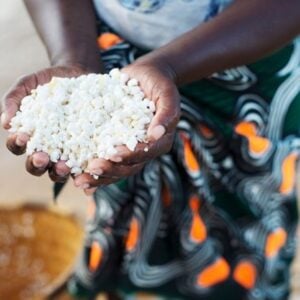For many families, ensuring that children take their daily HIV medication is a constant source of stress. Tablets often need to be crushed and carefully measured as children grow, and even small mistakes or missed doses can have serious consequences. A new solution is now emerging that could change this routine entirely: painless microneedle patches that work like a simple plaster applied once or twice a week.
This innovation is being developed by Hannah Wellington, a PhD student at the Wits Advanced Drug Delivery Platform (WADDP). The tiny patches are designed to deliver paediatric HIV treatment safely and consistently, providing caregivers with a reliable alternative to daily tablets. Once applied, the patch dissolves, releasing the exact dosage of life-saving antiretrovirals (ARVs) in a slow and controlled manner.
The simplicity of the system could significantly ease the burden on families, reducing treatment fatigue and ensuring children in resource-limited homes receive uninterrupted care. Each patch can be tailored for different age groups and dosages, with WADDP using in-house 3D printing technology to produce them affordably and at scale.
Wellington highlights the broader promise of the technology, noting that it is not only practical and scalable but also adaptable to other diseases. Beyond HIV, the microneedle platform could be applied to preventative therapies such as PrEP or even cancer treatments, making it a versatile tool in global health.
Her research builds on WADDP’s wider work in advanced drug delivery, nanomedicine, and tissue engineering. By combining these disciplines, the team is positioning South Africa at the forefront of medical innovation. In this project, the patch serves as the delivery vehicle, while nanomedicines form the therapeutic cargo—an approach that could transform how complex diseases are treated.
The project is supported by the National Research Foundation (NRF) through the NRF/DSI SARChI Programme, further underscoring the importance of investing in local innovation with global impact.







